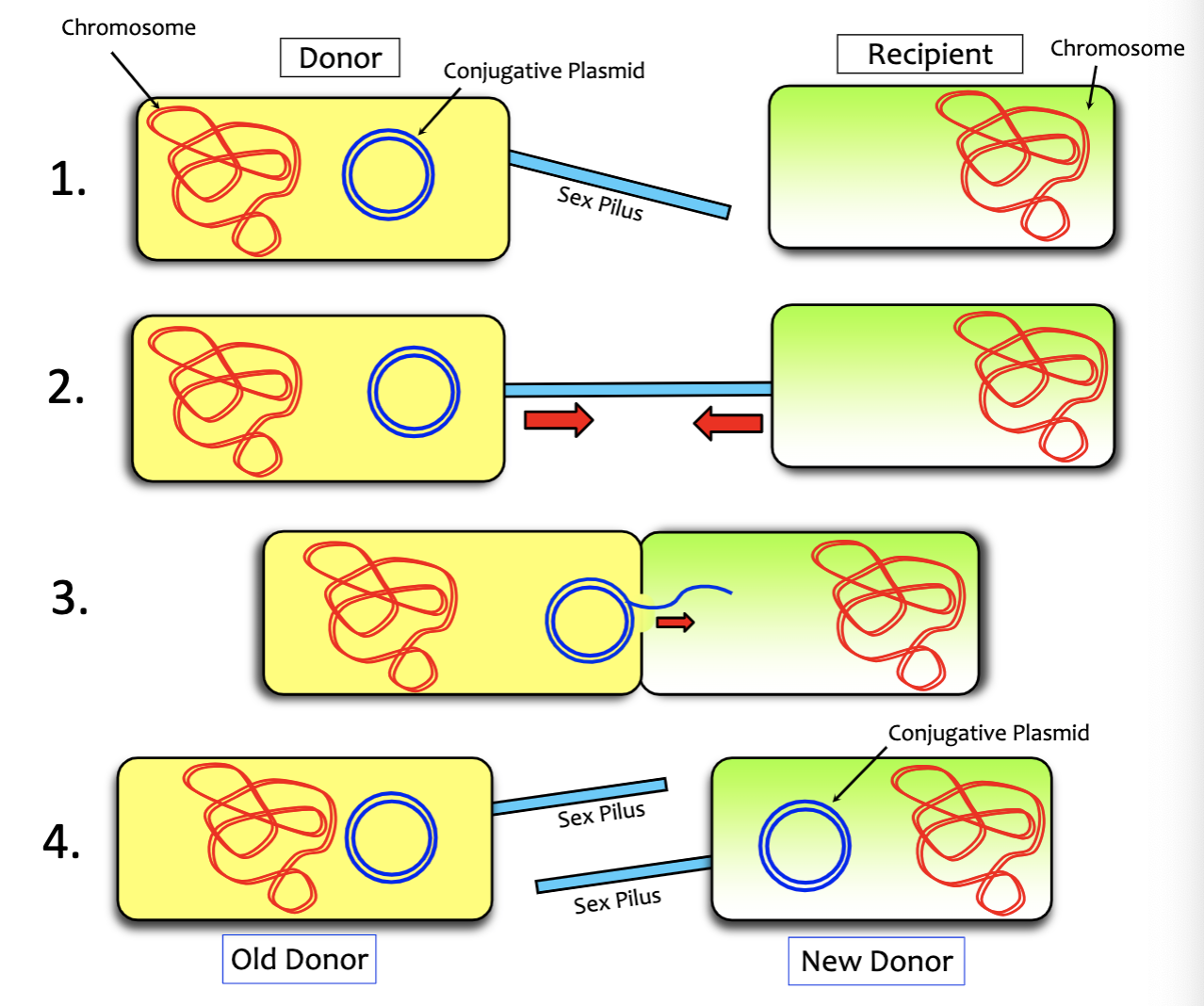ID: Bacterial Genetics
1/61
There's no tags or description
Looks like no tags are added yet.
Name | Mastery | Learn | Test | Matching | Spaced |
|---|
No study sessions yet.
62 Terms
in the central dogma, what are the key enzymes and what are their functions?
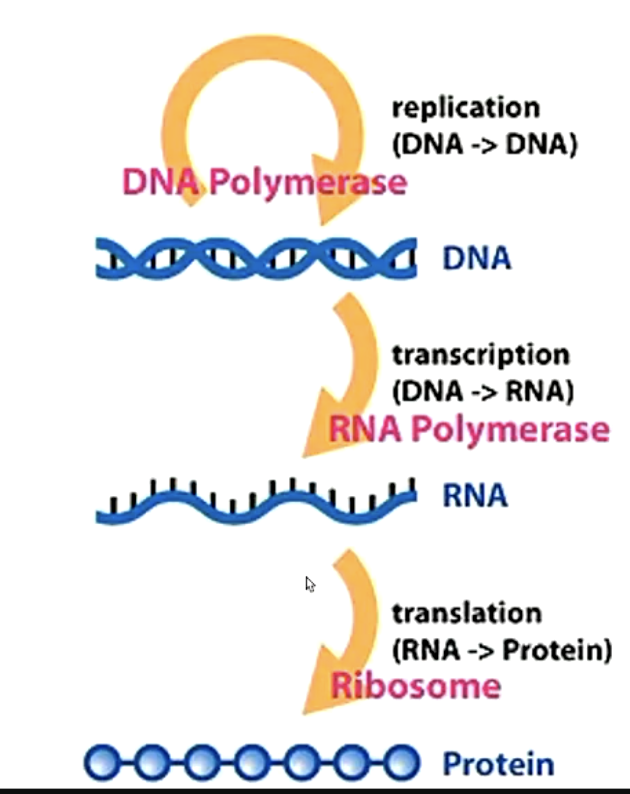
what is the promoter site? what binds to this site?
-35 and -10
RNA polymerase binds to the promoter region to begin transcription
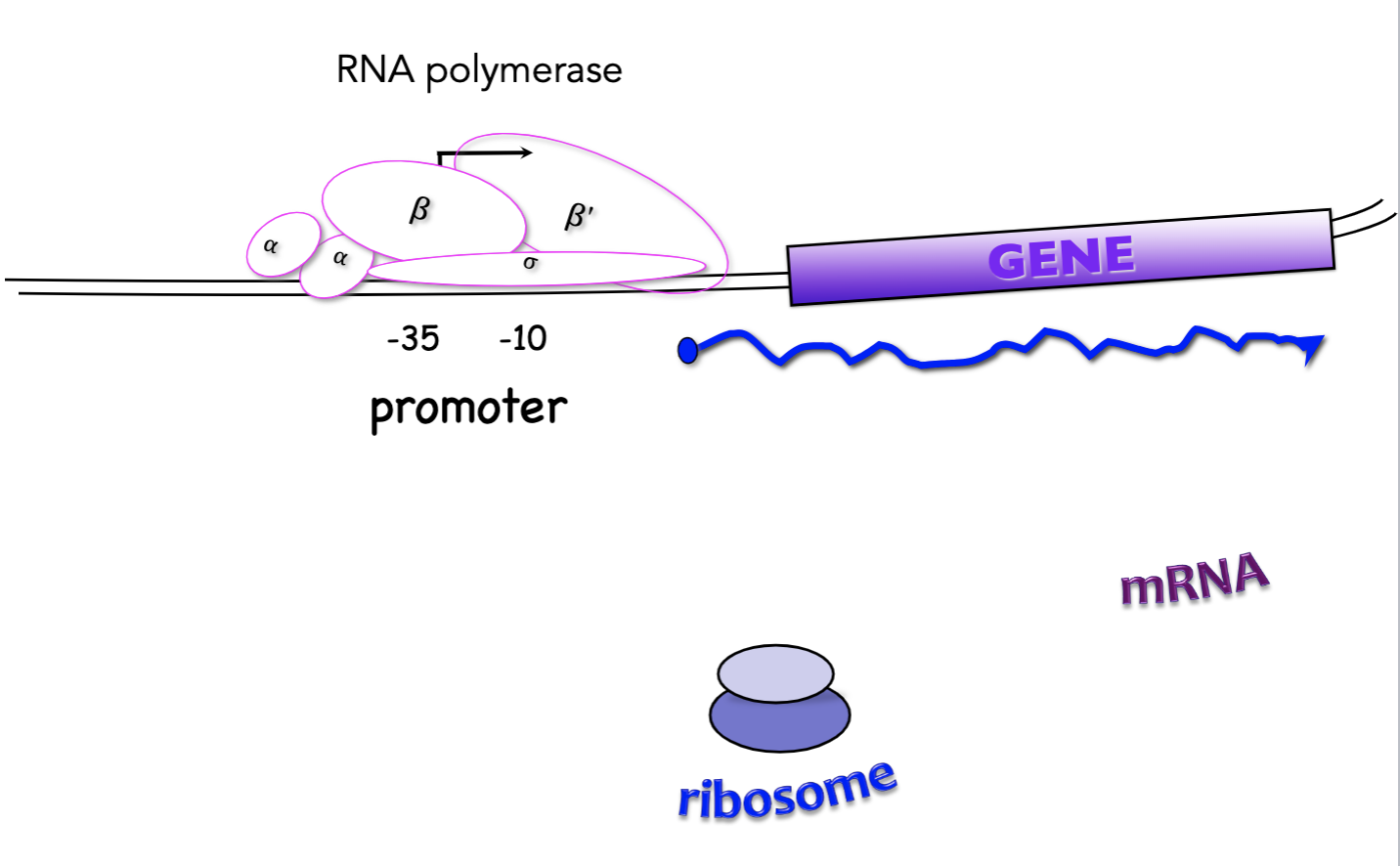
what is a codon?
Sets of three nucleotides in the mRNA that are read by ribosomes, the protein building machines
what is the start codon?
AUG (methionine)
ribosome starts making protein here
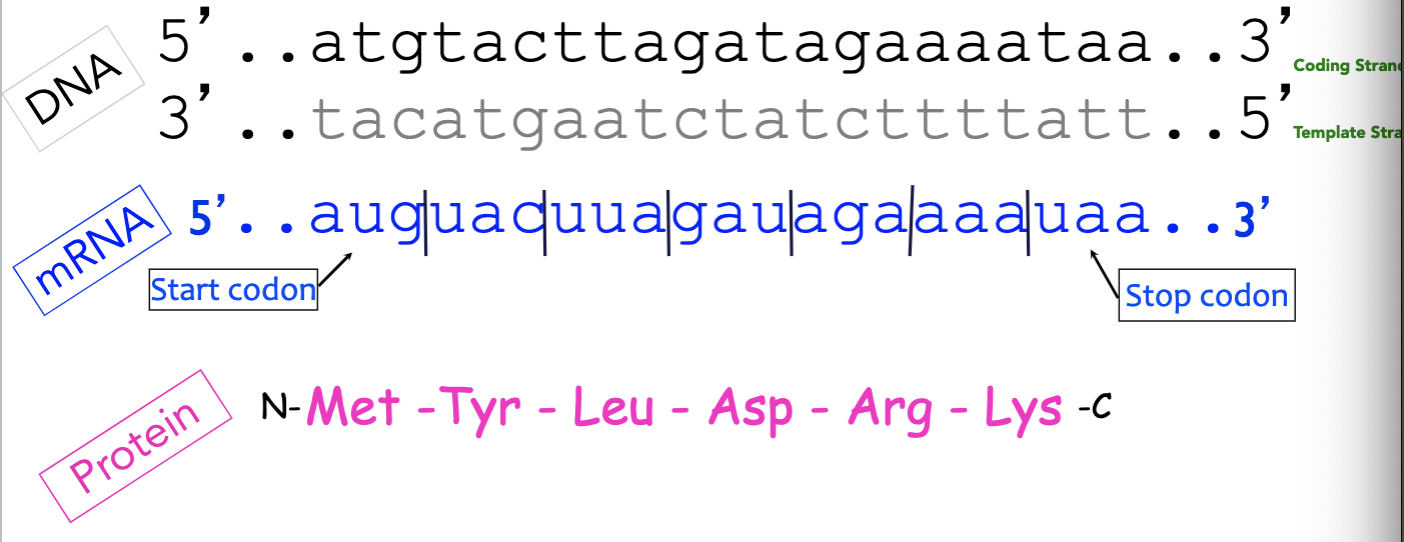
what are the 3 stop codons?
UAA, UAG, UGA
the ribosome falls off the message and protein synthesis is terminated
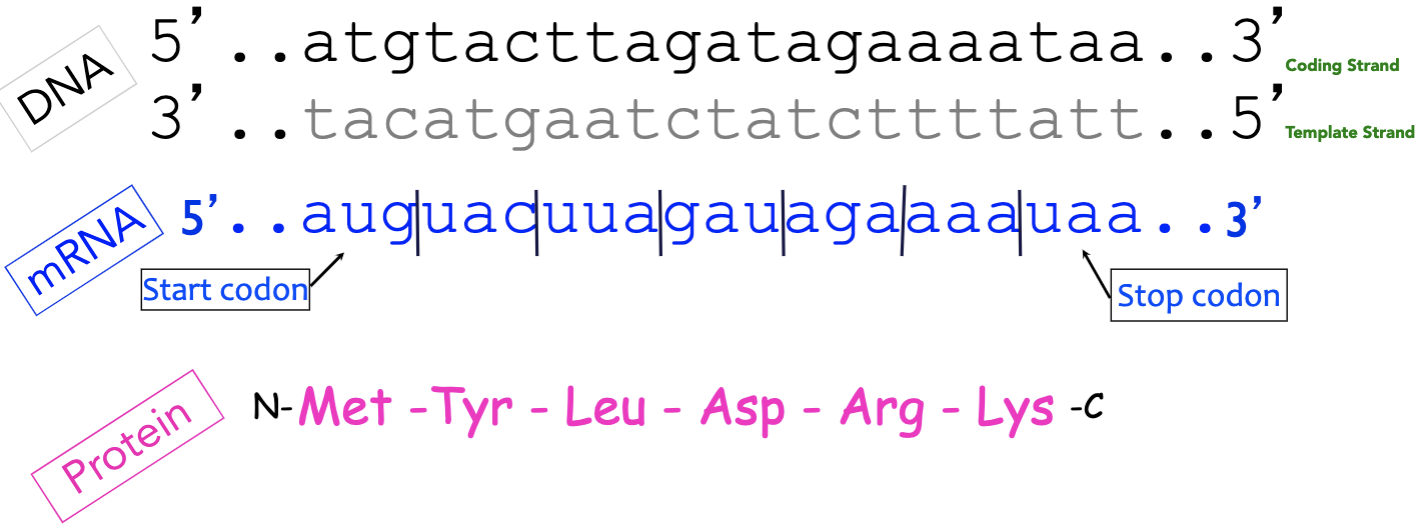
what is a mutation?
any change in the DNA that makes it different than the WT
what is a genotype?
the genetic make up, the DNA sequence
what is a phenotype?
the way an organism looks or behaves
T/F: a change in genotype can lead to a change in phenotype
TRUE
what are some examples of bacterial phenotypes?
motile vs nonmotile
encapsulated
acid producing
smooth/yellow/rough colonies
Lac-
describe a normal lactose utilization pathway.
lacY gene expresses lactose permease protein which allows lactose into the cell.
lacZ gene then expresses beta-galactosidase which digests lactose into glucose
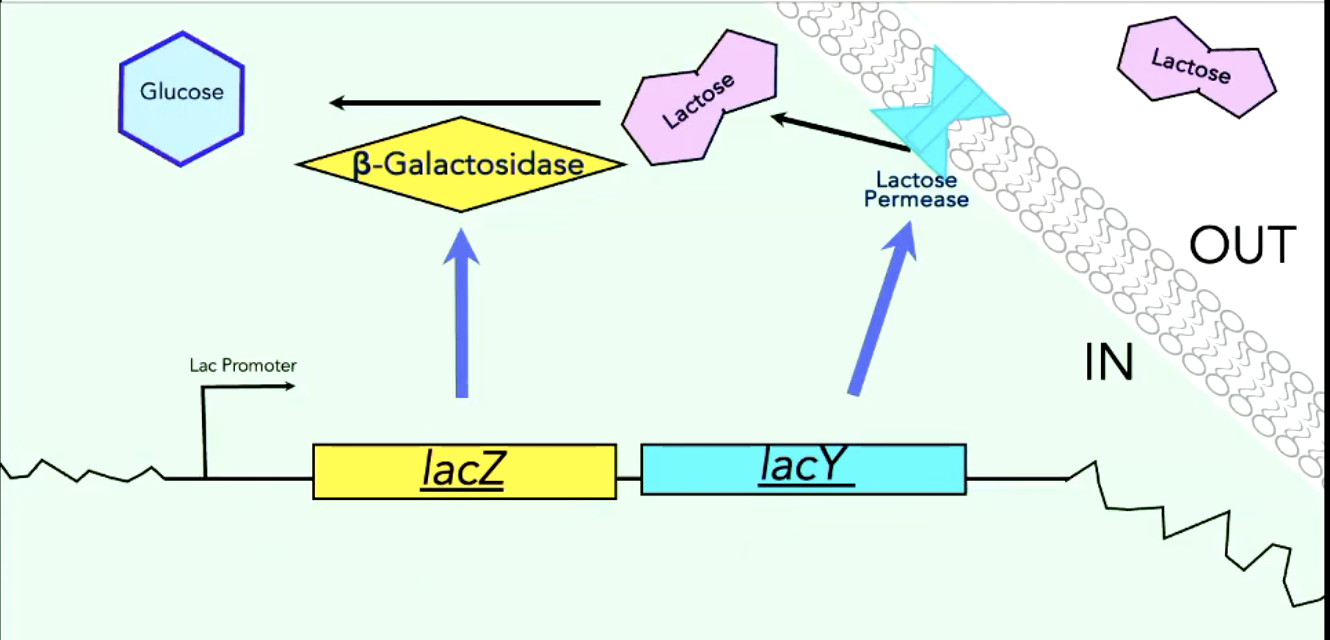
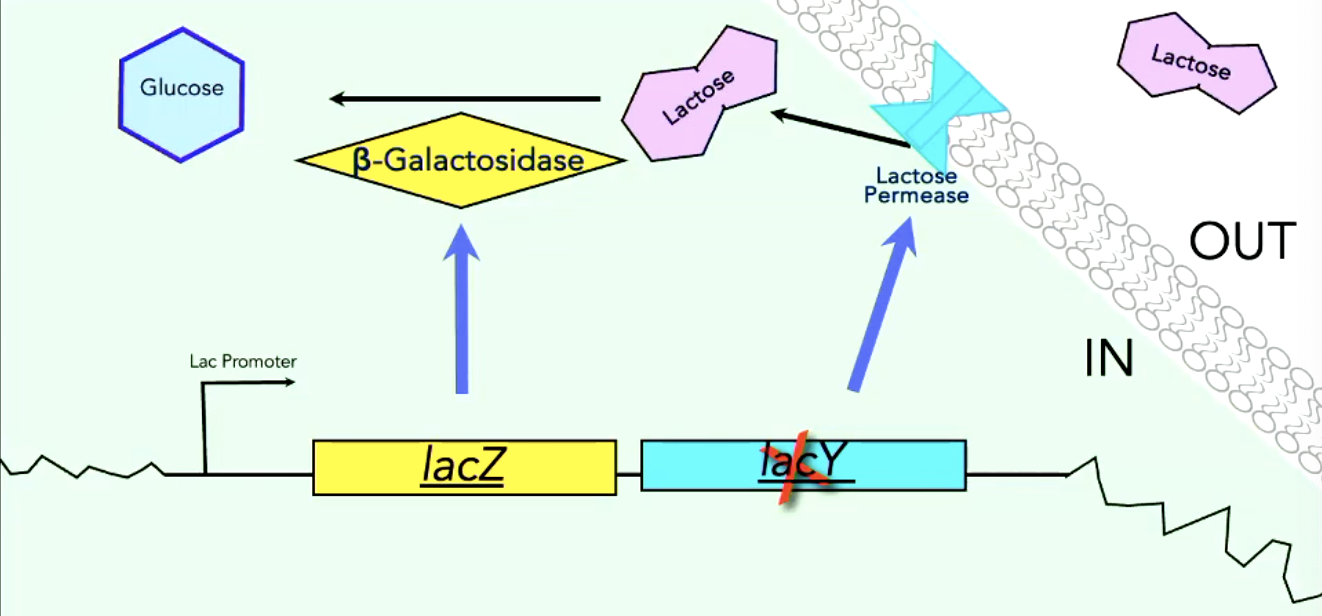
describe a lactose utilization pathway if you have a lac Y mutant. (aka Lac-)
mutant lacY would not be able to express lactose permease which means lactose cannot be used as a carbon source.
genotype: lacY-
phenotype = lacY-
a Lac- phenotype can be obtained by a mutation in what?
lacY or lacZ gene
what is a base substitution mutation? what are the different types
A change from one nucleotide to another.
Silent mutation: A change in a codon that does NOT change the encoded amino acid.
Missense mutation: A change in a codon so that it now encodes a different amino acid.
Nonsense mutation: A change in a codon so that it becomes a stop codon.
what are the types of mutations?
base subsitution
deletion
insertion
frameshift
null mutation
what is deletion mutation?
Removal of a piece of DNA
what is insertion mutation?
Addition of a piece of extra DNA into a gene, sometimes a large piece. Many insertion mutations are caused by transposable elements that will be covered later in this course.
what is a frameshift mutation?
A deletion or addition of a number of nucleotides not divisible by three. There are three possible reading frames on any mRNA. In genes with a frameshift mutation, the ribosomes "read" the mRNA in the correct frame until they get to the mutation, then are shifted to one of the two wrong frames.
what is a null mutation?
Any mutation that completely eliminates gene function

what type of mutation?
silent mutation (same amino acid)
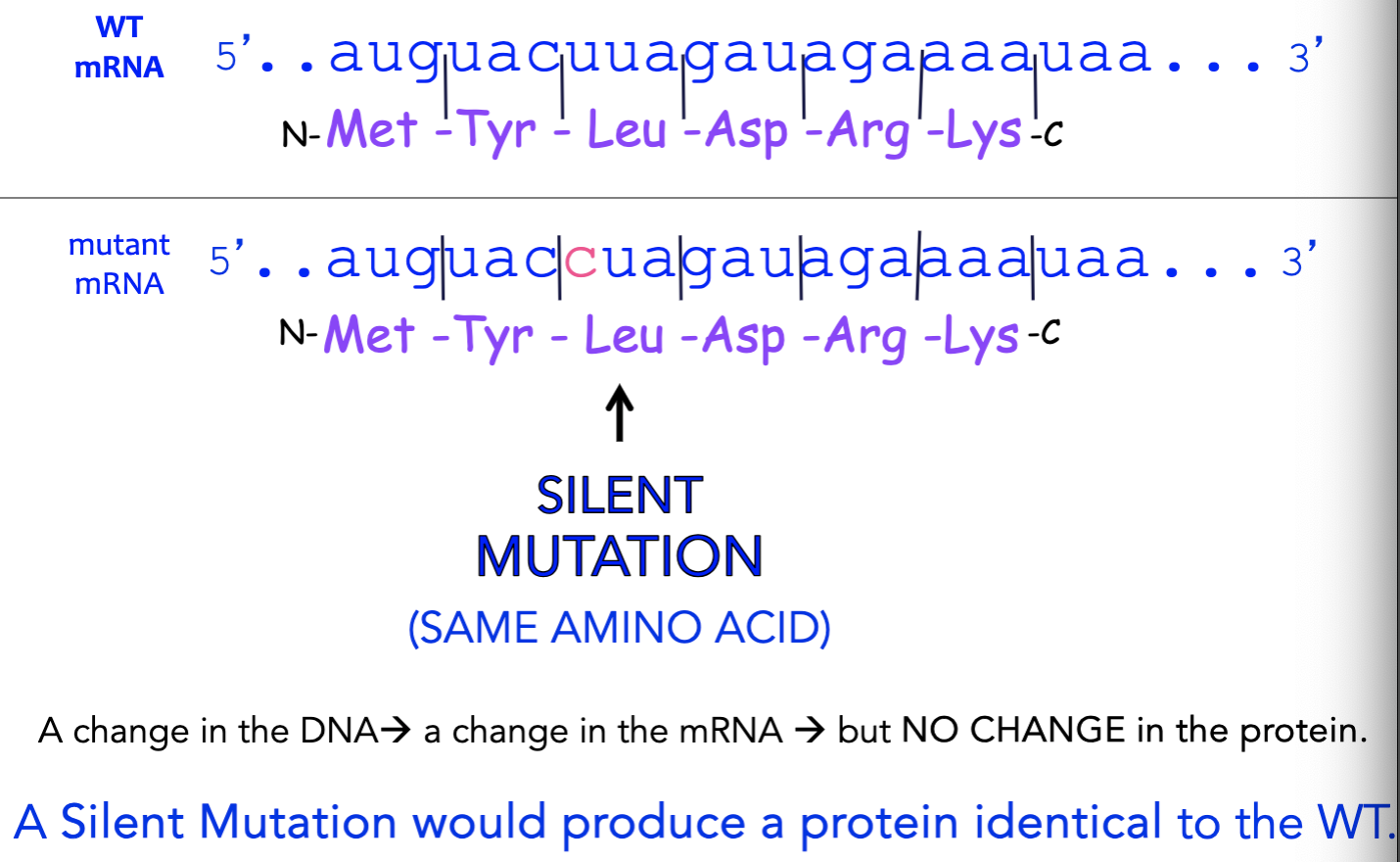
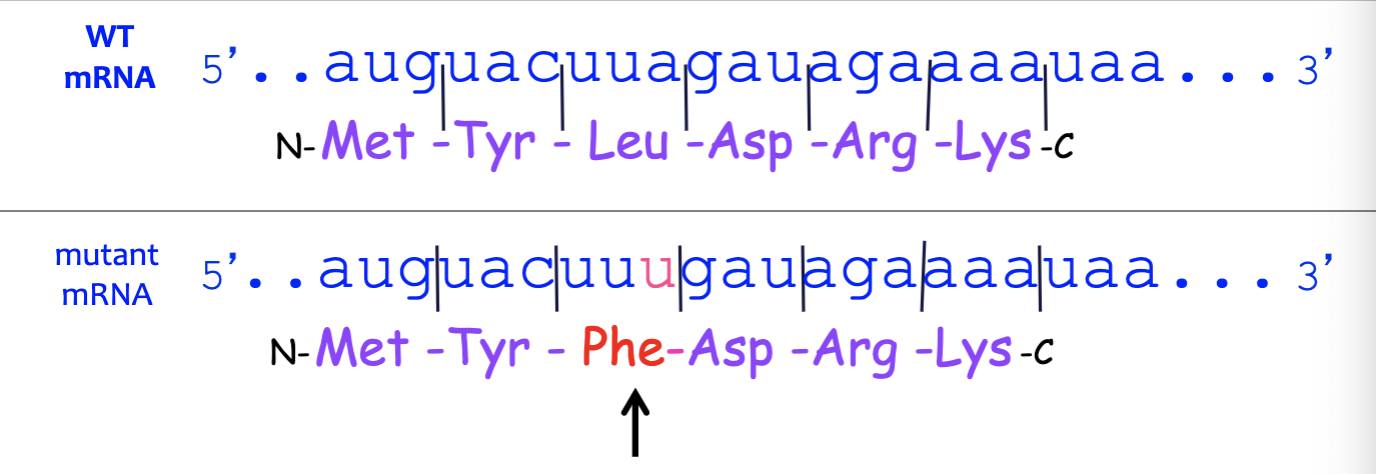
what type of mutation?
missense mutation (different amino acid)
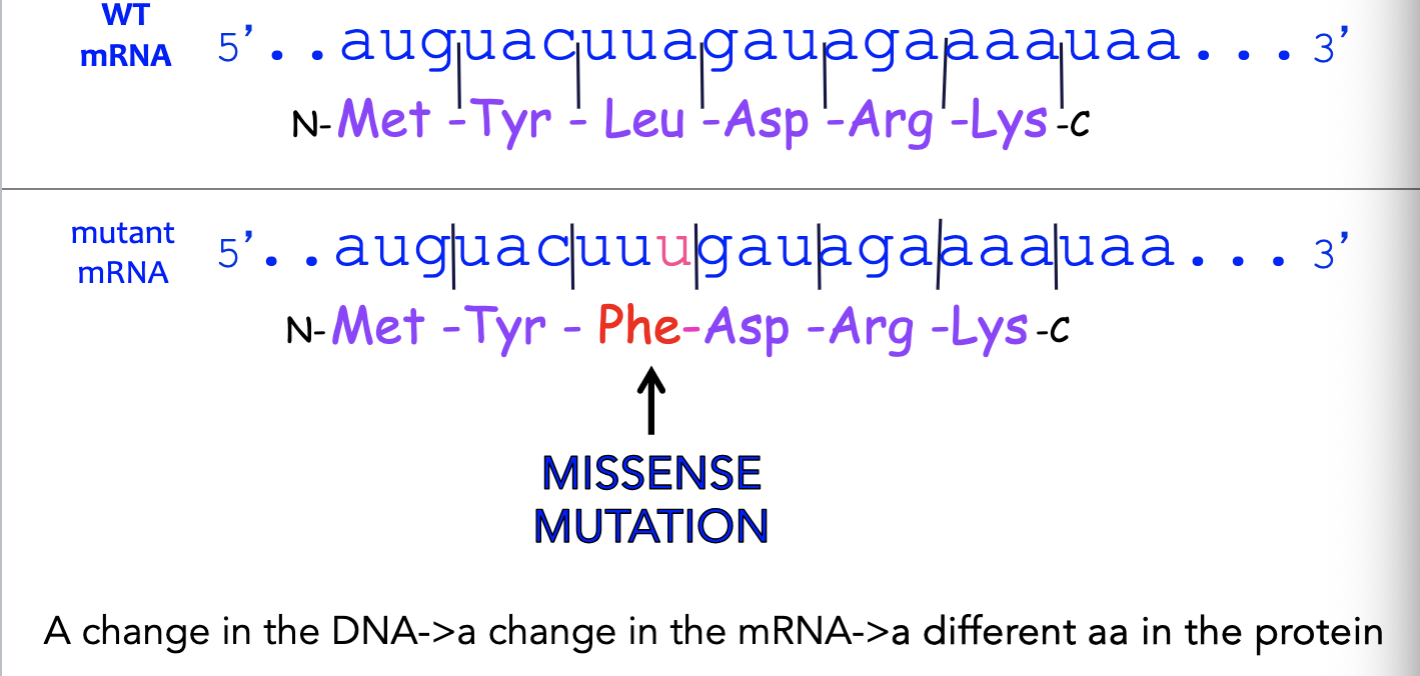
phenotype of a missense mutation can be '“silent” or dramatic depending on…?
how this different amino acid affects function of protein

what type of mutation?
nonsense mutation

Nonsense mutations can have drastic effects on the function of the protein, depending on…?
where it occurs along the protein length. The protein terminates at the point of the nonsense mutation, resulting in a shorter protein than intended.
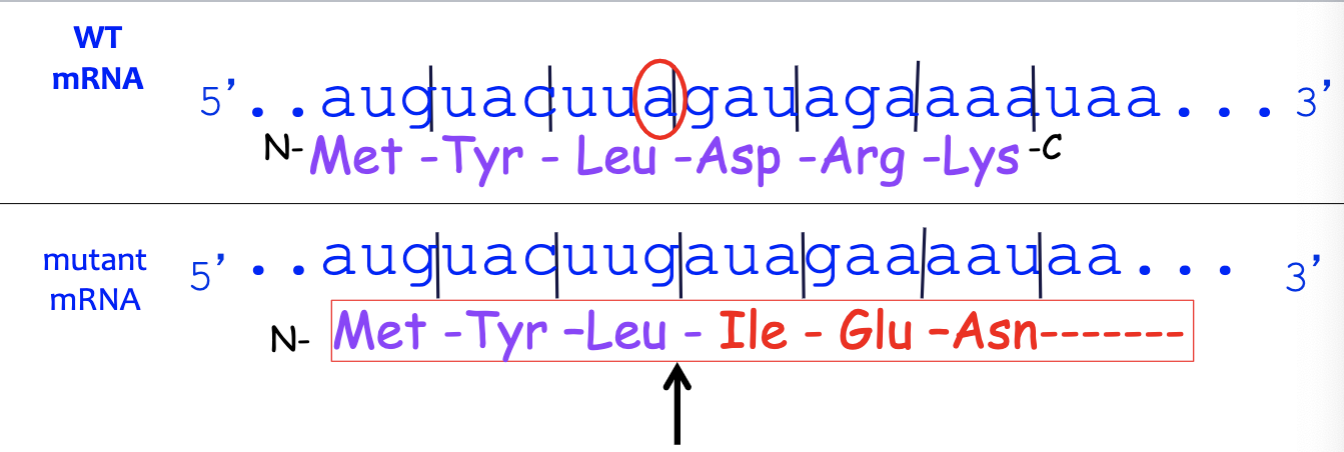
what type of mutation?
frameshift
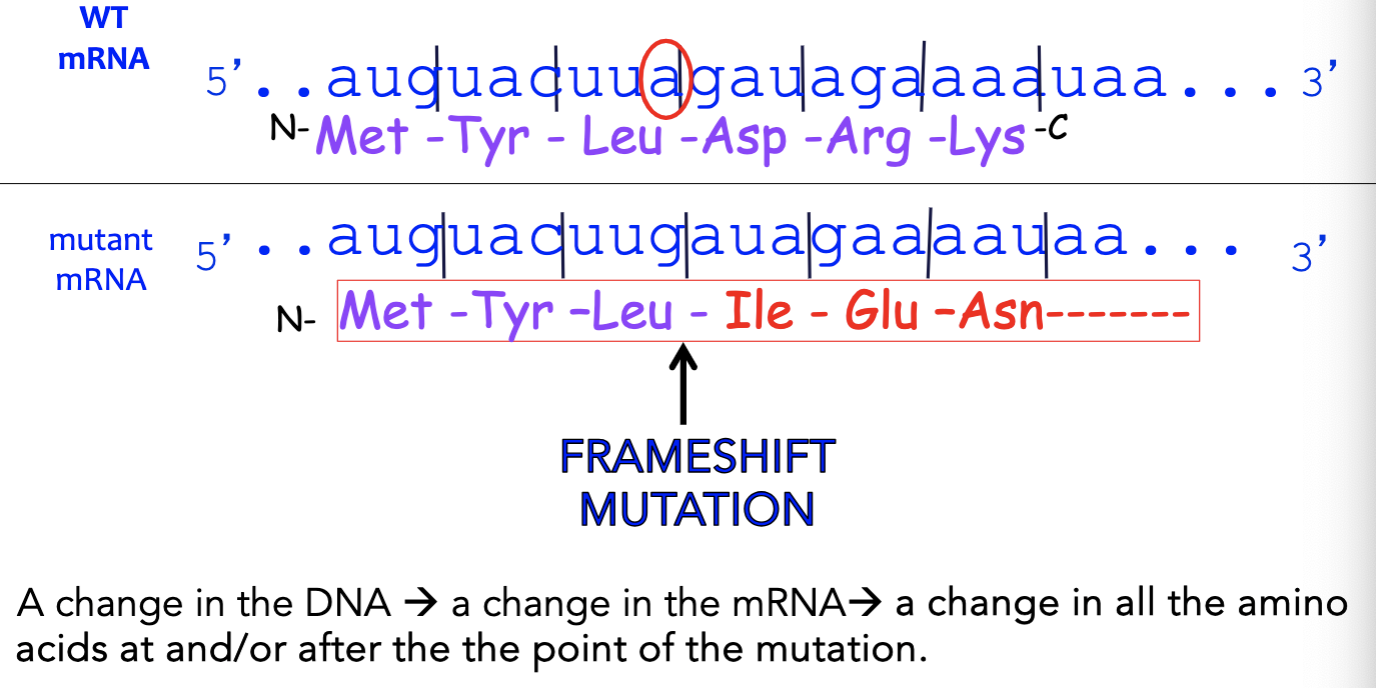
T/F: A FRAMESHIFT MUTATION is likely to have DRASTIC Effects!
true. A frameshift mutation results from a deletion or insertion in an open reading frame that
removes a number of base pairs not cleanly divisible by three. It usually eliminates protein
function because the entire coding sequence downstream of the mutation is gibberish.
Out of frame mutations often lead to an early stop codon.
what is a deletion mutation?
Removal of DNA from the gene.
Deletions can range from one base pair to thousands of base pairs (entire genes).
what is a insertion mutation?
Addition of extra DNA into the gene.
Large insertions are often caused by viruses or mobile DNA sequences called transposons that we'll hear about later in the course.
what type of mutations are most often inactivating, eliminating function of gene product?
insertion/deletion
frameshifts
nonsense
what’s an example of dominant nonsense mutation related to dentistry?
nonsense mutation in enamelin gene results in hypoplastic amelogenesis imperfecta
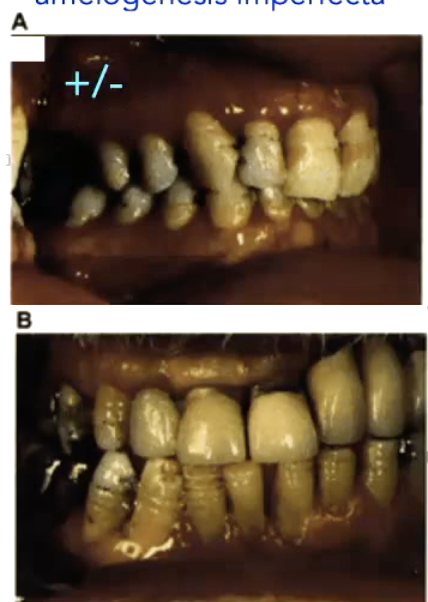
what is recessive nonsense mutation?
change in a DNA sequence that creates a premature stop codon in a gene, requiring two copies of the mutated allele (homozygous for mutated allele) for the phenotype to be expressed.
black panther = mutation
leopard = wild type
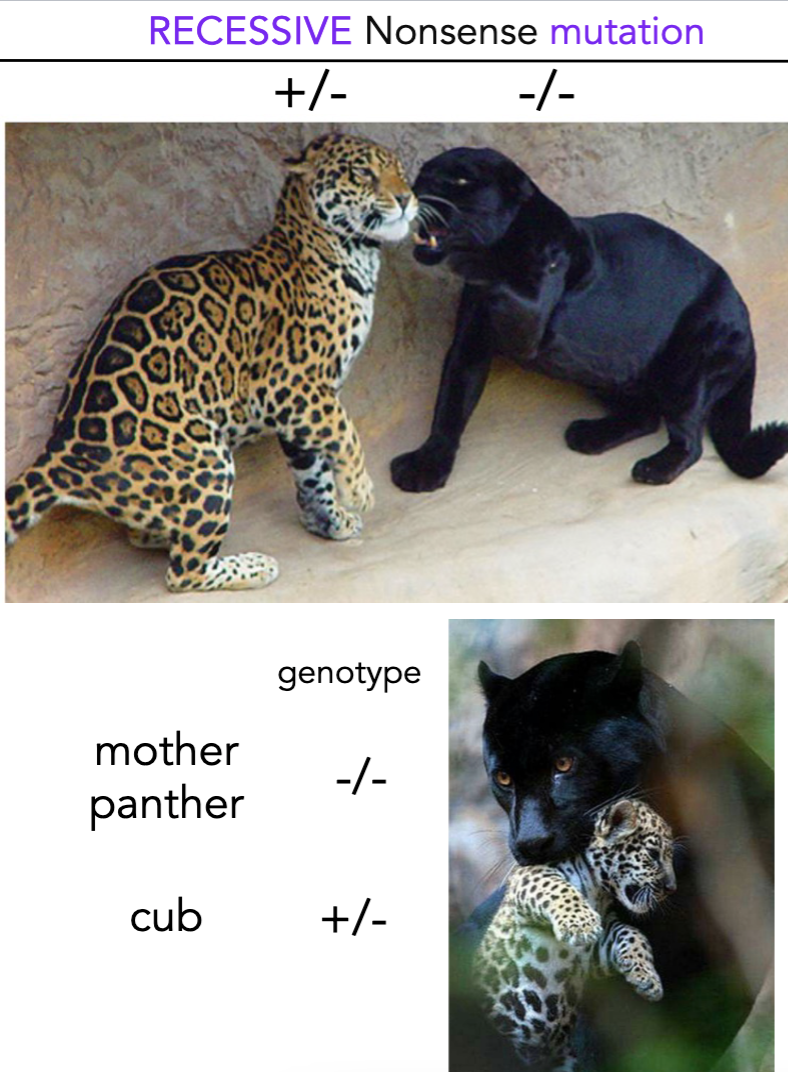
In bacteria, mutations may result in a change of ability to:
• UTILIZE a carbon source, such as lactose
• SYNTHESIZE an amino acid
• RESIST an Antibiotic
how do mutations occur?
spontaneously
errors in replication
exposure to mutagenic agents
UV light
sodium nitrate is metabolized to nitrous acid (HNO2) which deaminates bases altering their base pairing
what is an experimental method of finding a mutant unable to use lactose as a carbon source?
take a agar plate with glucose as the sole carbon source and “replicate” it onto another agar plate with lactose as the carbon source. if any colonies disappear, we know it must be a Lac(-) mutant.
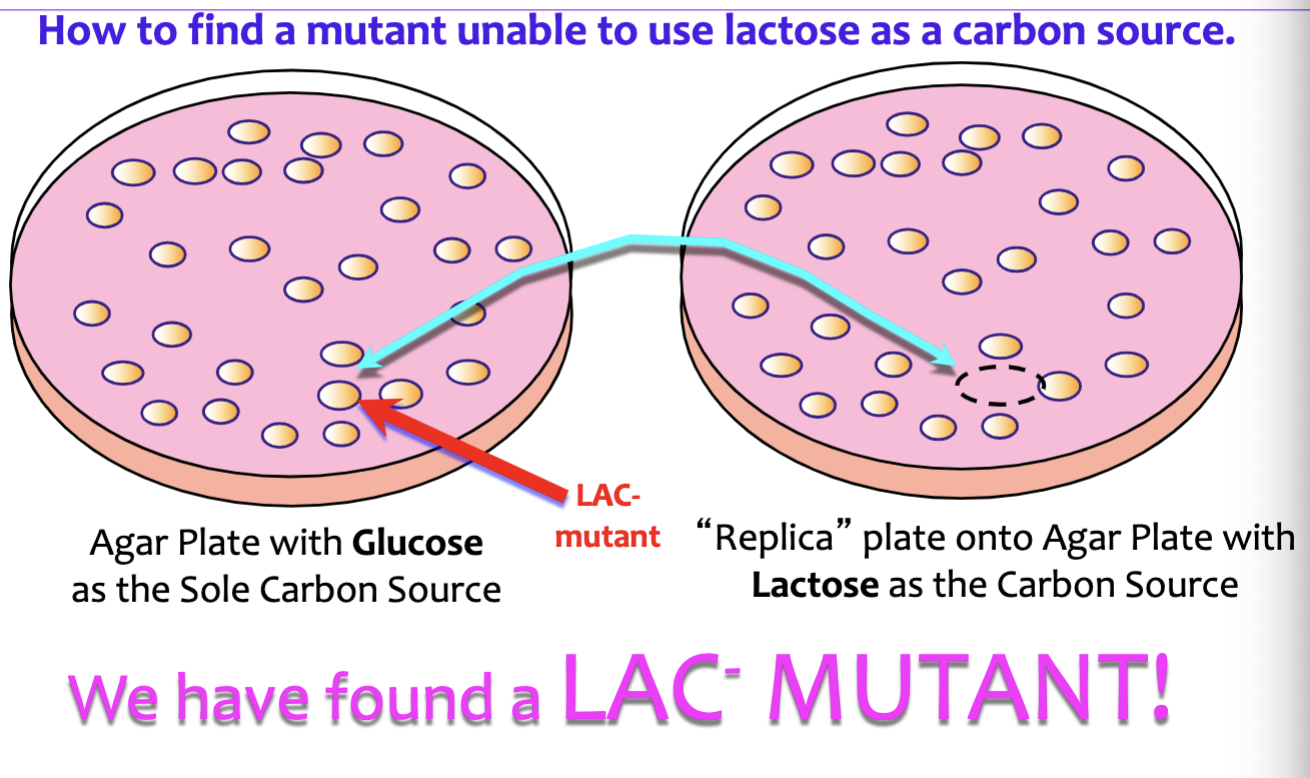
what is vertical gene transfer?
Genetic changes (mutations) are transferred from parent to offspring
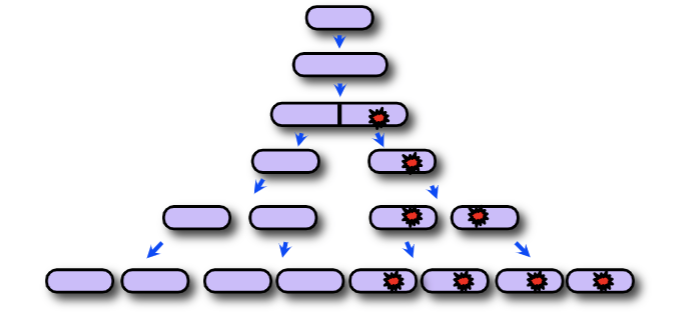
what is horizontal gene transfer (HGT)?
Introduction of DNA from OUTSIDE the cell.
New genetic material acquired from other cells
DNA can be maintained and propagated in subsequent progeny through vertical gene transfer
what are 2 pathways to acquire genetic changes?
vertical gene transfer
horizontal gene transfer (HGT)
transformation
transduction
conjugation
what is transformation?
process by which a competent bacterial cell acquires new genetic material from its environment
what does it mean for a bacteria to be “competent”?
Bacteria with the ability to import DNA
Free DNA in the environment is sensitive to what enzyme?
DNase, an enzyme that digests DNA and inhibits transformation.
imported DNA fragments during transformation are smaller/larger than a bacterial chromosome.
smaller (usually having 1-10 genes)
t/f: lysed bacterial cells often spill their DNA into the environment.
true (important for transforamtion)
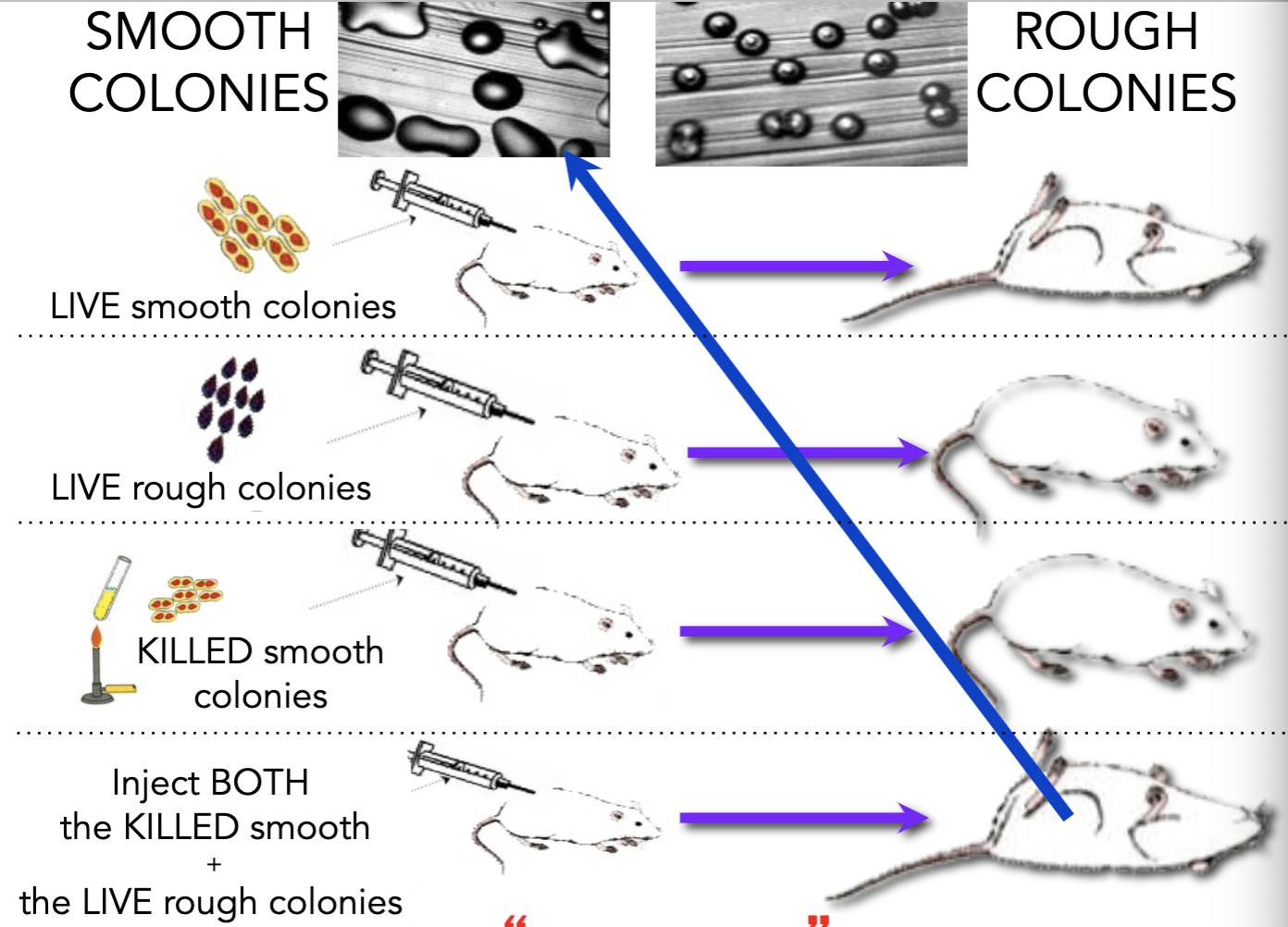
explain this experiment.
live rough bacteria were transformed into live smooth bacteria
what is transduction?
process by which a bacteriophage transfers genetic material from one bacterium to another bacterium
what are bacteriophages?
viruses that infect bacteria
what are 2 types of bacteriophages?
lytic phages: Replicate inside and subsequently kill (lyse) the host cell
lysogenic/temperate phages: can also instead integrate their phage genome into the bacterial chromosome (as a prophage)
what are the 2 types of transduction?
generalized transduction by lytic phages
specialized transduction by lysogenic phages
describe generalized transduction by lytic phages
During replication, host DNA is degraded
In a rare event, a random piece of the host chromosome can be packaged by phages
Any region of the chromosome can be transferred
Phage particles carrying host DNA can subsequently infect another bacterium
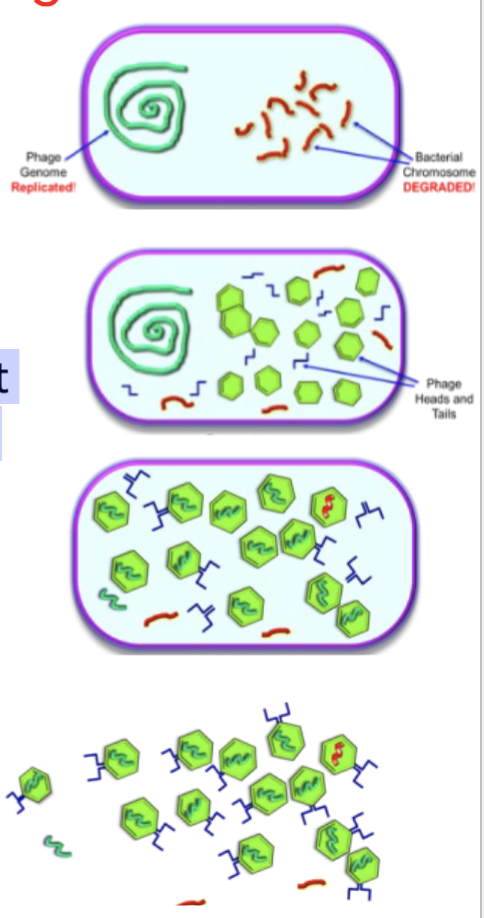
describe specialized transduction by lysogenic phages
Regions of the bacterial chromosome directly adjacent to the prophage may be accidently packaged during excision.
Only these specific regions of the chromosome can be subsequently transferred to another bacterium
more specific
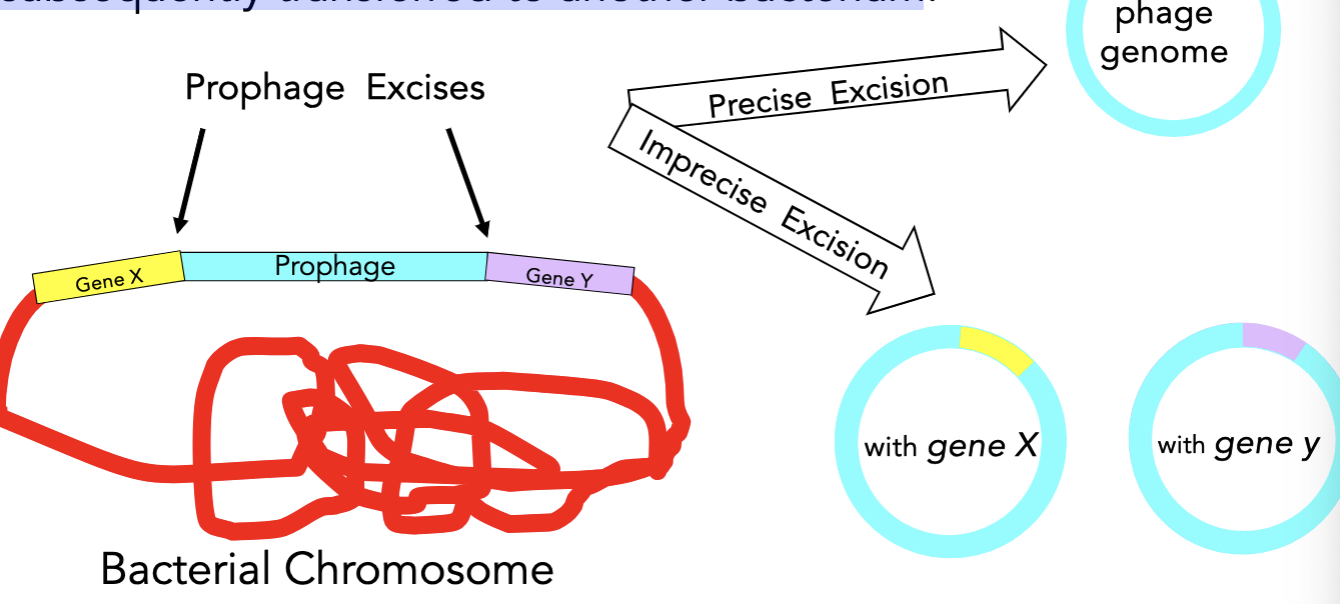
COULD the incoming DNA from transformation or transduction be maintained in the cell?
yes, if there is homology
during conjugation, the transferred DNA is usually a…?
plasmid, (extra-chromosomal DNA), distinct from the chromosome
what are conjugative plasmids?
Plasmids that carry special conjugation genes (tra genes)
A Conjugative Plasmid can confer upon its host cell, the ability to transfer the plasmid to other bacterial cells that don’t already have the plasmid, by the process of conjugation (mating).
what does it mean that conjugation is unidirectional?
there is a donor and a recipient
Donor: cell that donates the DNA
Recipient: cell that accepts the DNA
what is conjugation?
process by which genetic material is transferred from one bacterium to another bacterium through direct contact.
describe the process of homolgous recombination
if incoming DNA has a pair of genes homologous to that of recipient chromosomal DNA, RecA protein can line up the homologous regions of DNA and integrate the new incoming genes in a strand of the recipient.
Upon cell division, one of the duahgter cells will inherit the chromosome that has the newly incorporated gene. This new gene may confer a new ability (antibiotic resistance, virulence factor, enzyme, etc.)
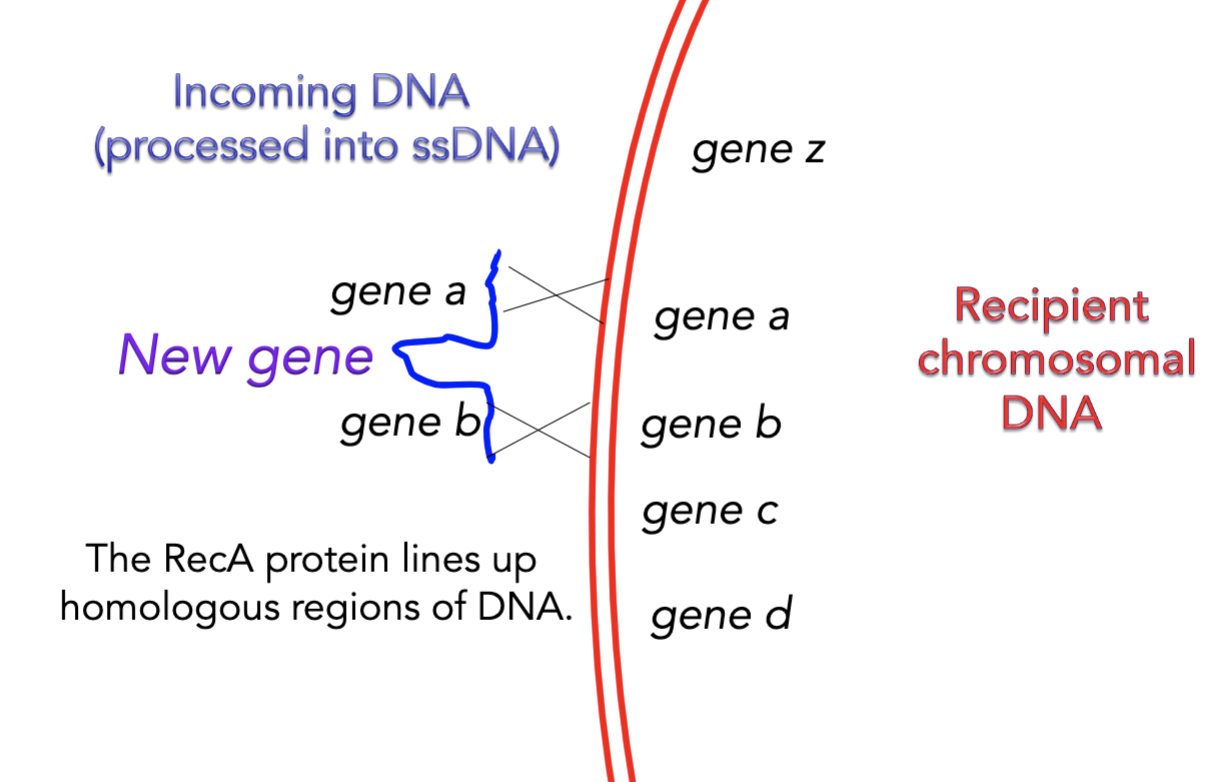
can bacteria acquire new DNA with little or no homology?
yes, if the new DNA is a plasmid.
what are replicons?
DNA elements capable of self replication (chromosomes and plasmids are replicons)
what are the 2 requirements to be a replicon?
origin of replication (“ori”): a site/special sequence in DNA where specific Rep protein binds
rep gene: encodes Rep protein that binds to “ori” to initiate DNA replication
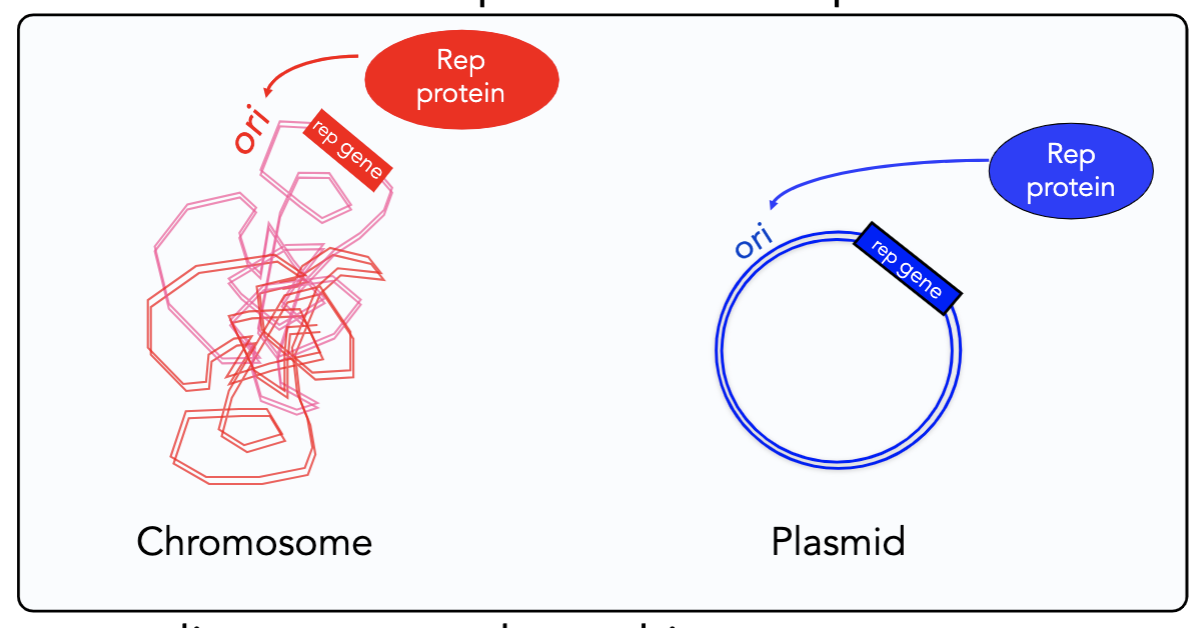
how do bacteria acquire new plasmids?
pick up free DNA plasmids by transformation
transduce a whole plasmid (only some phages can do this)
transfer plasmids from one bacterium to another via conjugation

what is the arrow pointing to?
conjugative or sex pilus
describe the process of conjugation
The donor bacterial cell synthesizes a special conjugative or sex pilus. The genes that enable transfer (tra genes) encode this sex pilus are often found on the “conjugative plasmid”.
The donor’s sex pilus attaches to the recipient cell.
Upon contact with another cell, the donor cell retracts its sex pilus, and a pore is formed directly between the two cells, allowing the transfer of a single-stranded copy of the
plasmid into the recipient cell.The single-stranded copy of the conjugative plasmid circularizes and replication completes the complementary strand. Upon acquiring this conjugative plasmid, the recipient cell has become a new donor.
